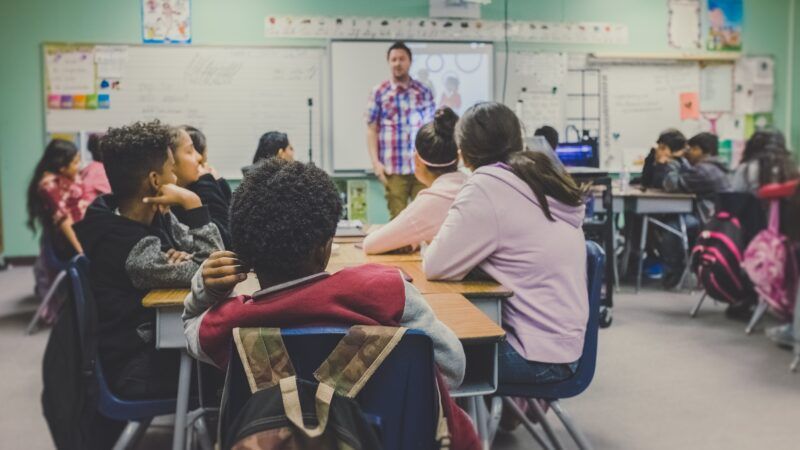School Districts Are Using Their COVID-19 Relief Money on Vape Detectors, Tennis Courts
"Some districts are investing big money in initiatives that don't appear at first glance strictly COVID-related."

Earlier this year, schools around the country received more than a hundred billion dollars from the federal government—American taxpayers, in truth—in order to recover from the pandemic and finally get back to the task of teaching kids.
The feds stipulated that 20 percent of that money be put toward addressing learning losses during the pandemic, but the bulk of it can be spent at schools' discretion. Which means, of course, that many schools are using this sudden injection of cash to make improvements that have nothing to do with keeping COVID-19 at bay.
"Some districts are investing big money in initiatives that don't appear at first glance strictly COVID-related," notes Education Week. "Miami-Dade schools plan to spend $30 million, or $86 per student, on cybersecurity. Raleigh County schools in West Virginia lists a $9 million effort—more than $800 per student—to expand an elementary school, adding nine classrooms, upgrading the library, expanding the kitchen, and separating the cafeteria and the gym. The Newport News school district in Virginia is spending $840,000 for a new student information system to help teachers catalog students' academic progress."
An unnamed school district will use some of its COVID-19 relief funds to install vape detection devices, purchase new student ID cards, and build a tennis court.
Indeed, many districts seem to be spending significant chunks of money on upgrading athletic facilities and expanding stadiums, according to Education Week. Athletics can be an important part of many students' lives, and letting kids get back to sports was a good reason (among many) to move away from the soul-crushing farce of virtual learning and get everybody back in school. But a slightly nicer football field probably isn't going to improve students' test scores or make them safer from COVID-19, which after all are the two primary justifications for all the spending.
In October, Reason's Brian Doherty noted a terrific report from ProPublica that detailed one Texas school district's plan "to spend $4 million of its education pandemic relief funds to construct a 5-acre outdoor learning environment connected to a local nature and birding center owned by the city." The project is not expected to be completed until 2024, at which point it will no longer be necessary—hopefully—to hold classes outdoors.
The American public education system's grand reopening, which largely took place this fall, has not produced severe outbreaks of COVID-19 in schools. Given this, it might actually make some sense for schools to spend the money on things that don't involve pandemic mitigation. Of course, if they spend the money on personnel, they could eventually end up with a shortfall once the pile runs out; districts certainly won't want to lower salaries or fire staff once that happens.
In any event, the decision on how to spend the money rests with state and local officials. The federal government has asked states to pay attention to where the money is going, but there's little incentive for districts to report responsibly. In North Carolina, several colleges with fewer students received significantly more money than other colleges that enroll more students. WRAL, a local station, asked dozens of the schools to explain how they planned to spend the money. Not a single one replied.
Show Comments (42)